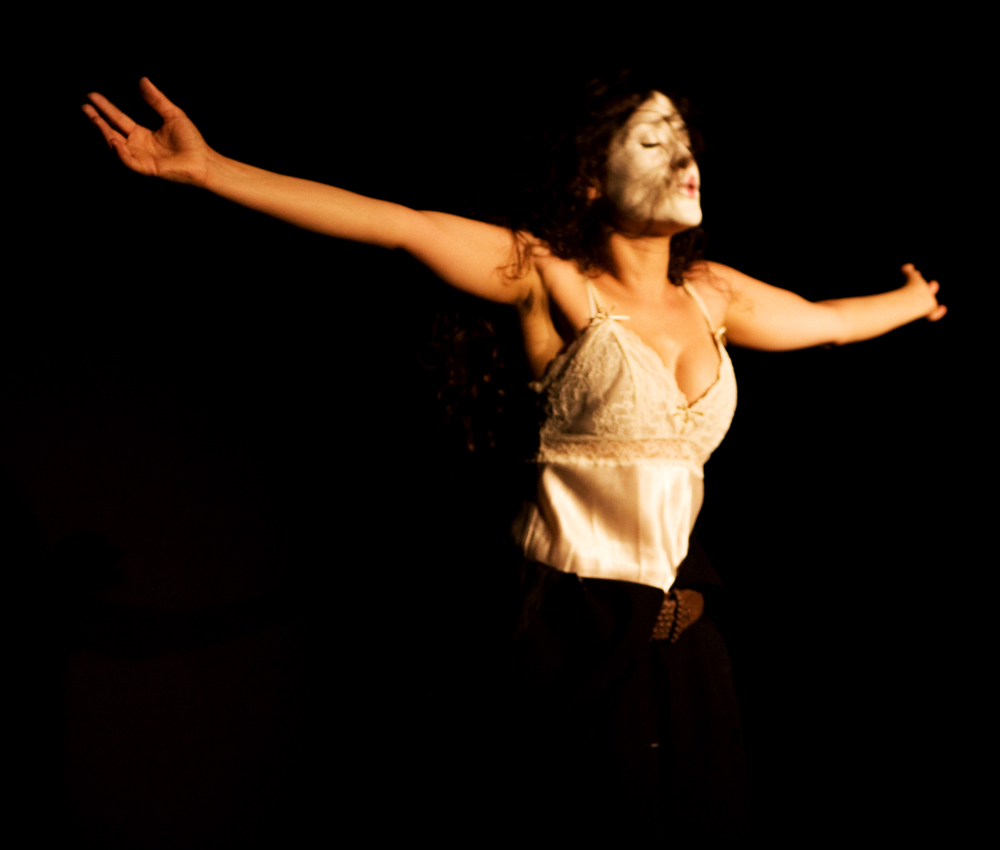Blog
Interview with Layla Metssitane
Multi-faceted artist Layla Metssitane has adapted, translated and directed Stupeur et tremblements, on top of also performing the play on stage. In this interview given at the Théâtre de Poche, in France, the Moroccan born artist gives us a glimpse of her creative process.
| How did you get the idea to put Stupeur et Tremblements on stage?Layla Metssitane: I had read the novel when I was 18 years old and three things touched me: Amélie Nothomb’s sense of humour, her view of women and her examination of the working world in Japan (the relationship between men and women). I was destined for economics, and I was very aware of the codified universe of the company. I wanted to bring that language to the stage, and to appropriate it, because it resonated in me on a number of levels. My first attempt came was when I was 20 years old, and then years later, Anne Delbée revived my desire to perform this text. It was created with La Compagnie Théâtre des Hommes, and since 2010, I have been continuously travelling with this production, that I originally adapted and performed at Avignon. The Alliance française and French cultural institutes then took the production under their wings: I have already performed in 17 countries.
What do you mean about « appropriating » the script? L.M.: I am from Morocco and from an Arab-Muslim culture where the condition of women is particular and questionable for some. In the Japanese society described by Amélie Nothomb, we find an equivalent treatment of women, objects of submission, forced to obey behavioural rules that they never question, which can seem astonishing to our emancipated Western eyes. This sliding from one culture to another seemed opportune to avoid a conflict between the two cultures by simply showing that women receive similar treatment in Japan and a Muslim country… The dress codes seem to support this: I start the production in a niqab, and continue with traditional white make-up in the Japanese tradition. |
|
Is Japan present in your staging?
L.M.: What I like about Japanese culture is the art of living, a respect for ancestral customs, really close to what I experienced in Morocco; for example, the ritual around the tea ceremony, that was performed by my Moroccan Grand-Mother and which is fundamental in Japan. I practiced Ikebana (floral arrangement) which taught me a gestural vocabulary that has become inherent in the young woman I play. What attracted me to this role was the mixing of cultural identities in one character, and being able to create many more… But everything is concentrated on Amélie-san: the environment is very minimalist; and I always tried to stay within a sense of suggestion and subtlety, two characteristics proper to Nothomb.
How did you conceive your adaptation?
L.M.: I didn’t want to make a piece of theatre out of the novel that had numerous characters, but rather conserve the author’s monologue, that then becomes the narrator who takes in the audience as a confidante in her story. My adaptation can be summed up to a concentration on the character of the author and on her interlocutor, miss Fubuki-San Mori (whose name means « snowstorm ») The play is conceived like a story with two distinct parts : the woman on the one side and her work life on the other. The character in the niqab at the beginning escapes from her condition by reading Stupeur et Tremblements. What we see on stage is her imagination in action.
How is the play received in the different countries where you perform it?
L. M.: It was obvious to me that Japan was the best subterfuge to evoke my own Muslim culture. Each of these societies can see themselves in the other without feeling criticized; it was in the goal of this interaction that Amélie Nothomb immediately understood my intentions and gave me her permission; she saw the production and is happy with its progress… Stupeur et Tremblements reminds me of Les lettres persanes by Montesquieu in its attempt to put the principals that govern Western society into perspective by putting them up in front of a foreign view and context and to reveal the differences.
Stupeur et tremblements is presented at Studio 16 from February 17 to 21, 8 PM, with an added prformance Saturday at 4 PM. English surtitles are Tuesday, Thursday and Saturday. Tickets are available online or at 604-736-2616.



